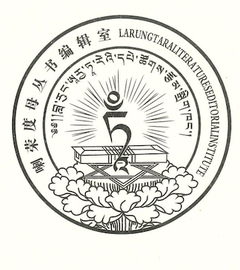The Story of Bhikṣuṇī Yen Tra
The Story of Bhikṣuṇī Yen Tra
from the Ḍākinīs' Great Dharma Treasury
Bhikṣuṇī Yen Tra[1] was a practitioner at a small nunnery at a sacred mountain associated with Avalokiteśvara in China’s Shanxi province.
From a young age, she trained in the vehicle of the Prajñāparamitā sūtras, and she taught Lalitavistara Sūtra to others on many occasions.
Later on, she was introduced to the Tibetan Vajrayāna tradition by a Tulku Kunga.
In 1992, she turned one hundred years old and became very ill. She told her disciples that she would again take birth at the same sacred mountain associated with Avalokiteśvara. However, to facilitate her Dharma teaching, she would take a masculine form. After giving her students the names of her future mother and father, she passed away, employing the Vajrayāna transference of consciousness (powa) method that she learned from her Tibetan teacher.
It is said that at the time of her cremation, many people perceived what seemed like buddha forms emerging from the sky. The next day, when they were going through her ashes, in the blue, limpid, cloudless sky was the white form of Avalokiteśvara. Riding a blue dragon, she[2] held a vase full of nectar in her right hand and a small branch in her left. The form was so huge that everyone saw it. Many green relics were found in her ashes; her heart organ remained intact; and, among her bones, everyone witnessed shimmering spheres and rays of light. Amazed by these signs, those present developed even greater faith in the Buddha's teachings.
This was translated from Chinese into Tibetan by Khenmo Dawa Drolma.
| Translated by Joseph McClellan, 2025.
Bibliography
Tibetan Source
mkhan mo zla ba sgrol ma, trans. “yan kra dge slong ma.” (2017). In mkhaʼ ʼgroʼi chos mdzod chen mo (Par gzhi dang poʼi par thengs dang po, Vol. 8, p. 299. Bod ljongs bod yig dpe rnying dpe skrun khang. BDRC W3CN2459.
Version: 1.0-20250415
